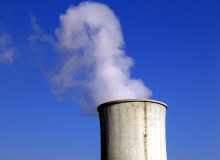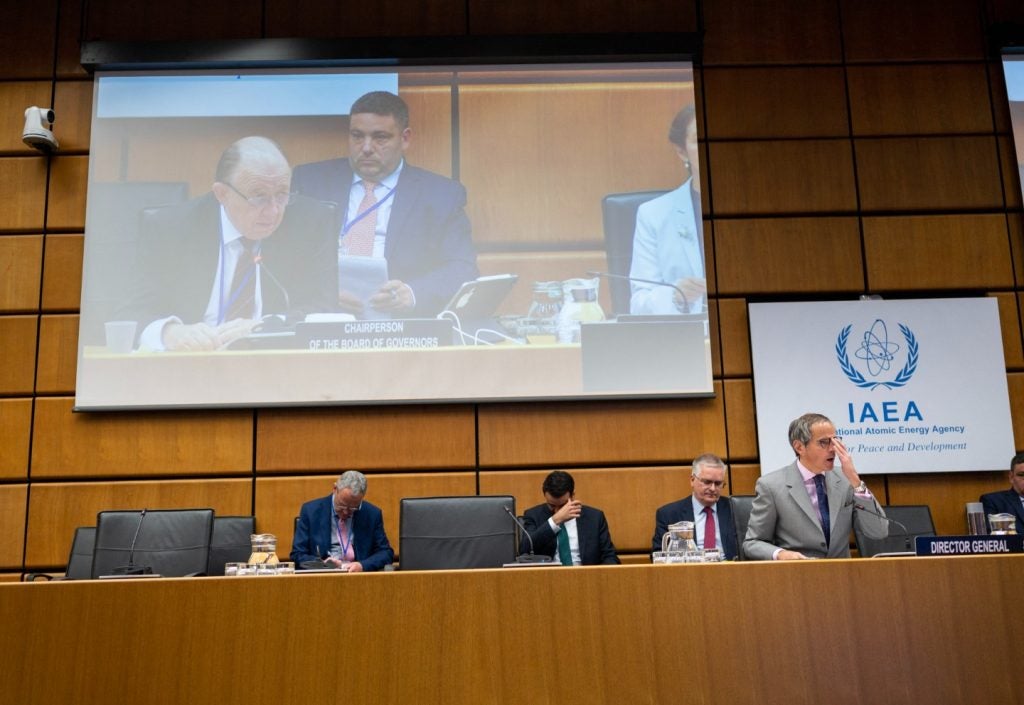
Nuclear is the future of power – this sentence seems at least to apply for Russia. While countries such as Germany, Switzerland or Italy reassessed or dropped their nuclear programmes in the wake of the calamitous events in Fukushima in 2011, the earth’s largest country is pushing ahead with its plan to boost the nuclear hold in its overall energy mix by 2030.
Driven by the increasing demand for power, nuclear power is set to become a primary source of energy in the years ahead. Reportedly better plant performances, improving reactor technology and strong public support are carrying the determination to become more independent from natural gas.
As well as boosting its domestic nuclear sector, nuclear exports are a number one priority and Russia is marketing itself as a global expert of nuclear technology and engineering.
Russia seems to be a civil nuclear superpower in the making, aiming to become known as a leading nation along with France, the UK and US.
But before it is taken seriously by the international community, it needs to address concerns about its ageing power plants and safety measures, particularly in the light of the recent industry crisis triggered by the disaster in Japan.
Nuclear boom
Historically, nuclear energy has never played a big role in the Russian Federation. The vast natural oil and gas reserves have made the country independent from alternative power supplies.
How well do you really know your competitors?
Access the most comprehensive Company Profiles on the market, powered by GlobalData. Save hours of research. Gain competitive edge.

Thank you!
Your download email will arrive shortly
Not ready to buy yet? Download a free sample
We are confident about the unique quality of our Company Profiles. However, we want you to make the most beneficial decision for your business, so we offer a free sample that you can download by submitting the below form
By GlobalDataYet by the mid-1980s, 25 power reactors were in operation. The sector was however beset by problems and the Chernobyl accident eventually led to the closure of the plants. Nuclear generation in Russia has only picked up again since the mid-1990s and today 26 nuclear reactors (22GW) are in operation, contributing about 16% to its overall energy mix.
In the years ahead, the number of nuclear plants is set to increase by another 26. to at least double the nuclear share of electricity supply to 30% by 2030. Also Fukushima has not changed these ambitious plans: responding to the accidents in Japan, the Federal Atomic Energy Agency (Rosatom) announced it was to perform ‘stress tests’ on all its reactors “to judge their ability to withstand earthquakes more powerful than the original design anticipated” but to not review the country’s nuclear programme.
Independent nuclear engineer and analyst John H Large has his concerns about the safety and efficiency of Russian technology: “I’ve been involved in aspects of Russian nuclear technology since the late 80s up until to 2002 and I’ve never been impressed by their standards of manufacture, quality control and production. In my opinion Russia has never reached the same standards as the Western industries.”
However, Russia itself does not doubt the safety of its reactor technology, as Carnegie Moscow Center programme coordinator for the Nonproliferation Program Petr Topychkanov explained: “Officials of the government and state assure that our safety technologies are efficient. It sounds true because unfortunately Russia already knows from its own experience that insufficient safety standards at nuclear energy facilities could result in environmental disasters.”
Topychkanov believes modern Russian reactors can easily compete with French technology, followed by British and American manufacture. Russia is in fact a world leader in fast neutron reactor technology, says the World Nuclear Association.
Rosatom is currently building a prototype of the SVBR modular lead-bismuth cooled fast neutron reactor. Furthermore, it is also concentrating on the development of an advanced VK-300 boiling water reactor (BWR), aims to improve the overall performance of power plants and to develop infrastructure for enhancing the productivity of its uranium mines.
Controversy: floating nuclear stations
Another key strategy for Rosatom is the development of floating nuclear power stations. The first of those self-contained, low-capacity nuclear plants on vessels is the Akademik Lomonosov, which is currently under construction and will be launched in 2013.
If successful, the country plans to build at least seven of the stations by 2020 and tow them along the Russian Arctic Circle near cities, towns or industrial enterprises.
Each vessel will have two modified KLT-40 naval propulsion reactors that provide up 70MW of electricity or 300MW of heat, enough for a city with a population of 200,000 people. The stations are supposed to have a lifespan of 40 years and will have a planned overhaul every 12 years.
Many industry experts and environmental groups in Russia and the West have condemned the project, even though Russia has 50 years experience of operating a fleet of nuclear-powered icebreakers. Already in 2004, a former federal inspectorate for nuclear and radiation safety, a former environmental advisor to the Russian president, a senior engineer of a nuclear power plant and a nuclear submarine construction engineer, warned in a book that such stations are impossible to protect against terrorism and very vulnerable to accidents.
John H Large agreed with this conclusion: “The last place you want to put a reactor is floating on the sea. One of the fundamental weaknesses of floating reactors is that if they do have an accident, and we’ve seen that all nuclear plants are prone to accidents, then there’s very little between them and a highly dispersive environment – the ocean.”
Large said another problem is the remoteness of the plants. “The plants will be out at sea, which makes it more difficult to access it by emergency services. If something goes wrong it’s going to be difficult to get to the reactor to put control measures and mitigation in place.”
The manufacturers however argue that floating nuclear facilities might even be safer against tsunamis and earthquakes. In deep enough water, tsunamis would have minimal effects on floating structures, with earthquakes transmitting much less force to them. In the case of an accident or a terrorist attack, it would also be possible to lower the core into the sea to keep it cool.
Recent events have shown that Russia is most likely to go ahead with its plans and will build a second floating nuclear station as early as 2012. In September, Chinese and Russian nuclear leaders agreed to develop their cooperation on the project, showing the way ahead to the future.
International cooperation
The cooperation with China is certainly not the only area Russia has focussed on in recent years. Nuclear exports continue to be the country’s primary focus.
In the past, it has implemented reactor designs in China and India and also took over the construction of a reactor for Iran at the Bushehr power plant, which was officially inaugurated in September 2011. More recently, the country signed collaboration agreements in the peaceful use of atomic energy with Argentina and France.
According to Topychkanov, this is a result of the “very good relationships” between Rosatom, the Russian Government and developing countries. “At the same time, many Russian experts believe that the nuclear cooperation with these countries does not violate non-proliferation principles,” he said.
A special relationship is the one with the US. In May 2010, the Obama Administration put the US-Russian agreement for peaceful nuclear cooperation to Congress, and in September 2011 energy leaders from Russia and America signed a joint statement on strategic direction of US-Russia nuclear cooperation on the sidelines of the International’s Atomic Energy Agency’s (IAEA) general conference in Vienna.
According to US Energy Secretary Stephen Chu this was a milestone for the two countries, which were long separated by their opposition during the Cold War but now share a leading role in nuclear security and disarmament.
A new chapter of cooperation has also been started with the nuclear plant project at Akkuyu in Turkey. Russia will build, own and operate a four-unit plant, supplying the state utility with electricity at a fixed price for at least 15 years. Rosatom will initially own 100% of the project and retain at least 51% in the long run. This new model of cooperation will also be promoted in Bangladesh, Belarus, Nigeria and Vietnam.
“Russia has a big fuel technology manufacturing capability in the conversion and enrichment of uranium and also very large uranium reserves,” said John H Large.
“What Russia is looking at is building reactors, to supply the fuel and then run those reactors. It is trying to tie-up all the loose ends of the nuclear fuel enrichment, called the front-end cycle, and to reprocess the back-end cycle where plutonium can be stripped out for the possible re-use in nuclear reactors or for nuclear weapons. What Russia is doing is seeing this opportunity.”
All in all, Large believes the developments are rather alarming. “I would be rather concerned about an expansion of Russian technology into the developing countries,” he said.
But for Russia, nuclear power has long been a number one priority. With doubling its domestic nuclear capacity, the expected privatisation of its nuclear companies and the increasing international collaboration on the peaceful use of nuclear, the country is certainly becoming the driving force in a crisis-shaken industry.





